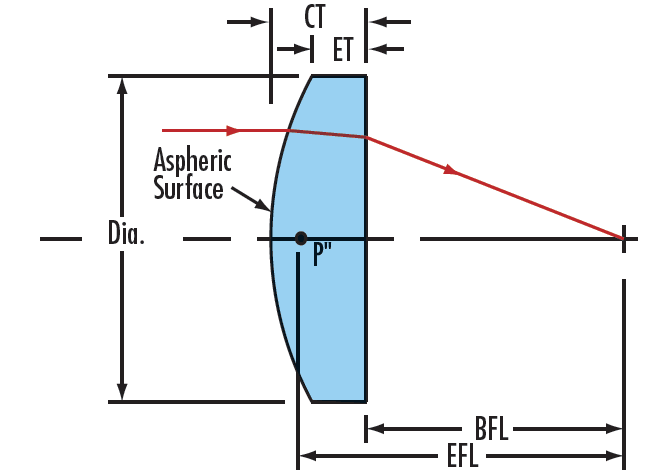
 TECHSPEC® 부품은 에드몬드 옵틱스가 설계, 사양 지정 및 제조하는 제품입니다. 더 알아보기
TECHSPEC® 부품은 에드몬드 옵틱스가 설계, 사양 지정 및 제조하는 제품입니다. 더 알아보기
해당 제품은 10.6µm CO2 레이저에서 회절 한계 초점 성능을 제공하도록 설계되었습니다. 10.6µm 기준 0.0005cm-1 미만의 대량 흡수가 특징인 Coherent® 적외선 셀렌화 아연(ZnSe) 소재로 제조되었으며, 비코팅 옵션이 제공되고 8 - 12µm 파장 대역에서 투과율이 우수한 BBAR 코팅 처리가 가능합니다. 제품에 적용된 정밀 설계 덕분에 레이저 시스템, 열화상 이미징 어셈블리 및 FTIR 기기와 통합하는 데 적합합니다. 해당 제품은 10.6µm 기준 λ/20 미만의 불균일도, 40-20의 표면 품질, 50Å 미만의 표면 거칠기가 특징입니다.
참고: II-VI Incorporated는 현재 Coherent Corp.로 변경되었습니다. 셀렌화 아연은 독성 물질이므로 취급 시 반드시 주의해야 합니다. 독성 물질이 묻지 않게 고무장갑이나 비닐장갑을 항상 착용하세요.

에드몬드옵틱스는 특정 어플리케이션 요건을 충족할 수 있는 광학 및 이미징 부품에 대한 포괄적인 맞춤형 제조 서비스를 제공합니다. 에드몬드옵틱스는 프로토타입 개발, 본격적인 생산 준비 단계 등 단계와 관계없이 고객의 니즈를 충족하는 유연한 솔루션을 제공합니다. 에드몬드옵틱스의 엔지니어는 전 개발 과정을 지원합니다.
에드몬드옵틱스의 제조 역량:
자세한 내용은 에드몬드옵틱스의 맞춤형 제조 역량 페이지를 확인하거나 여기로 문의 바랍니다.
본사 및 지사별 연락처 확인하기
견적 요청 도구
재고 번호 입력 필요
Copyright 2023, 에드몬드옵틱스코리아 사업자 등록번호: 110-81-74657 | 대표이사: 앙텍하우 | 통신판매업 신고번호: 제 2022-서울마포-0965호, 서울특별시 마포구 월드컵북로 21, 7층 (서교동, 풍성빌딩)
The FUTURE Depends On Optics®